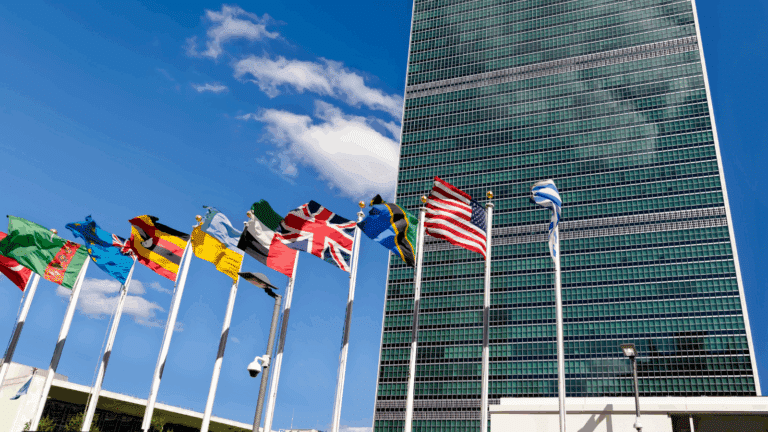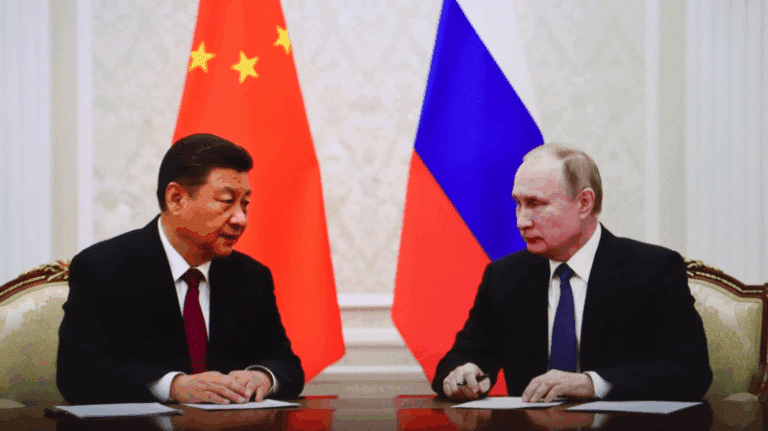This roundtable report reflects the authors’ understanding of key points made in the course of the discussion. It does not necessarily represent the views of the Center on Global Energy Policy. The summary may be subject to further revision.
Contributions to SIPA for the benefit of CGEP are general use gifts, which gives the Center discretion in how it allocates these funds. More information is available on our Partners page. Rare cases of sponsored projects are clearly indicated.
Background
On October 18, 2021, Columbia University’s Center on Global Energy Policy (CGEP) hosted a special session of the Natural Gas Forum on the global nature of the current unexpected gas crisis, which has sparked chaos in many parts of the world. A number of factors have been put forward to explain the crisis, including a faster-than-expected pandemic recovery in economic demand that has precipitated global supply chain issues, extreme weather conditions around the world, and liquified natural gas (LNG) facility outages. The forum was an opportunity for participants to discuss the underlying causes of the global gas crisis and its long-term market, policy, and political implications. The discussion started with outlooks for the winter across the European Union, Russia, the United States, and East Asia before turning to a debate over any longer-term implications of the natural gas crisis on the energy transition.
The forum’s participants included policy makers and senior leaders from major international agencies, energy companies, financial institutions, civil society organizations, academia, and nongovernmental organizations. This summary of the proceeding begins with the broad takeaways of the discussion, which occurred on a non-attribution basis under the Chatham House Rule, and then delves into regional issues and the future of natural gas.
Key Takeaways
Blame and Fear Exacerbate the Crisis
Many participants emphasized that there is too much focus on who is to blame for the crisis and not enough on how to prevent the situation from recurring. Anxiety and situational issues appear to be feeding the frenzied price increase: one observer commented that current prices include a fear premium reflecting both the harsh outlook for the coming winter and uncertainty over adequate gas inventories. The threat of limited gas supply is more significant in light of winter’s approach. A key message from the forum was that if the coming winter is mild, prices will drop rapidly.
Structural Issues and an Investment Gap
Participants generally agreed that low gas prices in recent years had discouraged investments in the energy industry and contributed to the global gas supply shortage. The lower investment combined with a lack of alternatives for fuel switching (due to a tight coal market, low wind generation, and low hydropower generation) led to the current price environment.
Many industry participants called for policy measures that incentivize investment in gas supplies and infrastructure development, such as pipelines and storage capacity, during periods of sustained low prices. Additionally, some questioned whether coal, given its relative ease of use for fuel switching with gas compared to renewable energy sources, could be making a comeback—a prospect lent greater credence by a recent increase in coal use, even as world leaders gather at the 26th United Nations Climate Change Conference to discuss lower-carbon commitments.[1]
From the demand side, energy consumption continues to grow as the post-pandemic economic recovery proceeds faster than expected. Participants highlighted the need for demand-side policies to be given greater consideration, especially because natural gas use in many countries is projected to increase, at least in the short term. For example, one observer noted that if the EU had implemented a building retrofit program in 2009 after the Ukraine gas crisis, it would have reduced EU annual gas demand by an estimated 20 billion cubic meters per year and helped to alleviate the current gas crisis.
Given the growing gap between the ambition of where the world wants to be with regard to climate change action and the reality of what is happening, forum participants agreed that greater investment in the energy industry is needed. The environmental, geopolitical, and economic implications of this investment gap are manifesting in unforeseen ways—the current global gas crisis being one example. However, participants expressed different views on where new investment is most needed. These differences align with actions by the EU in doubling down on renewable energy and an accelerated transition away from fossil fuels versus many emerging economies focusing investment on natural gas.
Energy Poverty No Longer Limited to Developing Countries
A theme throughout the discussion was how energy poverty has become a truly global problem. Some participants observed that the most vulnerable populations in Europe will need emergency financial support to help pay for electricity and heating to get through this winter. This situation has already prompted European governments to take actions in different forms, including energy grants, rebates on tariffs, or tariffs being frozen for at least the coming winter.[2] In countries seeking to accelerate a move away from fossil fuel use, some participants called for de-risking instruments to adjust for price volatilities and prevent excessively high prices that could lead to demand destruction and further energy poverty. Additionally, many discussants highlighted the tension between climate change and energy access policies, with one observer arguing that securing affordable and reliable energy is prevailing over climate ambition. In any case, this tension may cast doubt over the pace and decarbonization pathways of the energy transition.
Outlook for Winter: Regional Perspectives
Natural gas is used for heating in some regions, and therefore gas demand is higher in those places during the winter. Importing regions, especially Europe, could be particularly exposed to high gas prices and disruptions if this winter is extremely cold.
Europe
As EU politicians prepare to pass major climate policies such as the Fit for 55 legislative package, which sets out the EU’s transition plan to reduce emissions by at least 55 percent by 2030, the political ramifications of high gas prices, which are passed on to consumers as high electricity prices, is an immediate concern. As one expert noted, the European Commission believes it is essential for consumers to buy into the energy transition, making the high gas and power prices, which have triggered fears of a repeat of the 2018 yellow jacket protests,[3] very worrying.
With coal and oil energy markets already squeezed, little can be done collectively in terms of fuel switching. As such, some industrial energy users in the United Kingdom and parts of continental Europe have reduced output in sectors such as fertilizer production, which may portend further demand curtailment this winter. Although improved wind and hydropower generation could help alleviate this situation, such power depends on weather conditions and, as one commentator remarked, is simply wishful thinking. The same commenter observed that although current gas storage levels are about 77 percent of capacity,[4] lower than the 5-year average of 90 percent,[5] gas inventories should be sufficient for a normal winter—a harsher winter, however, could change that assessment.
The question of whether Russia can step in to fill the gas shortage in Europe has dominated the press and market movements.[6] But even if Russian stakeholders were willing to help, it would be at the expense of their own preparations for the winter ahead.
Russia
Given low Russian gas storage volumes coming out of the spring this year, the situation in Russia mirrors that of Europe. As one participant highlighted, the situation that Gazprom, Russia’s majority state-owned gas company, now finds itself in is a case study of how low prices have discouraged investment in new gas projects. For years, the company had deferred greenfield investments, and lower demand during the 2020 pandemic exacerbated the issue, resulting in further cuts to upstream investments. Gazprom, which was already running on razor-thin margins, also decreased storage levels over the past year to reduce maintenance costs. Furthermore, as the participant described, the deferral of maintenance works in 2020 to 2021 due to Covid-19 resulted in suppressed production capacity in Russia (an outcome that was compounded by a fire at the Yamal gas processing plant in August).[7] Gazprom also has obligations to its long-term contracted customers, many of whom are exercising clauses for additional volumes. The participant described how, in consequence, Gazprom has no physical volume left for the spot market; it is dedicating 25 percent of its production to filling underground storage facilities as part of its legal obligation to protect domestic supplies.
The participant shared the view that Russia is holding back gas supplies not as a political maneuver but in a desperate effort to prepare for winter, which tends to be colder and longer in Russia than in Europe. Although a supply increase to Europe could ease political tensions and allay market concerns, the participant pointed out that such a move is hindered by a lack of goodwill between Russia and the EU; moreover, were Russia to meaningfully increase exports, the speaker noted, it would jeopardize its own preparations for the upcoming winter.
One participant asked if Russia could possibly switch its gas-powered generation to fuel oil and unlock greater flows of gas to Europe. A regional expert said such a switch would have to be of significant capacity to resolve Europe’s gas crisis and, as such, would come at a great financial and environmental cost to Russia and thus would require significant political compromise on the EU’s side to make it worthwhile.
United States
One expert painted a more optimistic picture in the US. Although as of the date of the forum storage was 15 percent less compared to last year and demand had rebounded strongly, the US was still producing more gas than it consumed domestically. The same commentator opined that the country is nowhere near the dire circumstances other parts of the world face and will manage this winter successfully, with the potential exception of some regions. The participant observed that if the winter is markedly cold, the Northeast could face gas supply shortages, especially areas such as New York state, which recently shut down the Indian Point nuclear power plant and consequently has become more dependent on gas,[8] and New England, where prices can reach levels similar to those in Europe (i.e., at the Dutch Title Transfer Facility hub) in order to attract cargoes of LNG.[9]
East Asia (China, Japan, Korea, and Taiwan)
According to one regional expert, the outlook for East Asia is relatively stable, with no major disruptions expected, subject to weather conditions. Given significantly higher spot prices for natural gas, the region’s preference for long-term contracts has proved beneficial this year. A potential vulnerability for the region is its relatively small storage capacity compared to the EU’s or the US’s, which leaves the region particularly dependent on LNG imports. Japanese buyers, however, have been successful in stockpiling LNG supplies ahead of this winter.
The same expert argued that current spot prices do not reflect underlying supply and demand balance, and therefore after this winter prices may decrease given that supplies may be adequate. The person suggested, though, that prices will eventually stabilize at the higher end relative to previous years as LNG users seek to replenish depleted storage supplies. This view was shared by other forum participants, who saw storage levels at the end of this winter as the key indicator for the 2022 natural gas market.
This regional discussion also highlighted the effectiveness of energy efficiency policies in helping to reduce energy consumption. In 2011, shortly after the nuclear shutdowns triggered by the Fukushima incident, Japan implemented a series of national and local campaigns aimed at raising public awareness of energy savings measures in homes and businesses.[10] Forum attendees considered these campaigns successful and suggested they could be replicated in the EU and US.
The Role of Natural Gas in the Energy Transition
The current gas crisis, combined with a global push to transition to cleaner energy sources and decrease carbon emissions, has caused a wide array of political responses regarding natural gas’s role in the energy transition. Some forum participants described natural gas as a “bridge fuel” in that it emits significantly less carbon dioxide (CO2) than other fossil fuels (50–60 percent less than coal) when burned for energy.[11] However, other participants stressed that it is still a fossil fuel and therefore has its drawbacks, including significant methane leaks. Industry officials argued that regardless of the pros and cons of natural gas, the high level of investment in natural gas extraction and infrastructure, as well as the prevalence of natural gas as a global source of energy (accounting for 23 percent of global primary energy demand),[12] will prevent any rapid transition away from it as a fuel source. Attendees agreed that the role gas will play in the energy transition is highly dependent on how industry and public policy address methane leaks, as well as the availability of other cleaner energy sources.
Various participants made it clear that the global mindset around the energy transition is greatly influenced by the risks and timeline of climate change compared to the risks associated with current levels of energy access and affordability. One attendee emphasized that the detrimental effects of climate change are still widely considered concerns for the distant future whereas energy availability and affordability are more urgent. Another attendee supported this viewpoint by highlighting the actions of policy makers in China, where Chinese officials place great value on fuel availability and have increased production and imports of coal and gas this winter to secure sufficient energy supplies for heating.[13] Various participants appeared to share the viewpoint that in the battle between concerns over the environmental impact of continued fossil fuel use and the need for gas to keep constituents comfortable over the winter, the environmental concerns will inevitably lose out. Although China remains publicly committed to achieving peak emissions by 2030 and carbon neutrality by 2060, there is a tacit understanding that ensuring energy access in the near term will mainly rely on hydrocarbons.
Beyond China, participants discussed varying political approaches to the energy transition. Experts in European energy policy explained that the EU has taken the lead on the energy transition and has greatly prioritized investing in renewable sources and electrification to increase the availability of clean energy. These participants see current rising natural gas prices as a step in the right direction to reducing fossil fuel use; increased prices will theoretically deter consumers from using gas to heat their homes and incentivize households to invest in electric heat pumps, further reducing the EU’s CO2 emissions and dependence on fossil fuels. Participants stressed the importance of a political narrative that not only sells aggressive climate action but also accommodates future price volatility and supports consumers through the energy transition. The specifics of such a narrative depend on various country-specific factors such as the availability of and investments in renewable energy sources and/or a country’s plans for future reliance on nuclear power. European energy experts explained that the EU has been shifting away from fossil fuels and has had time to plan for a decrease in natural gas consumption. However, other participants pointed out that an enthusiastic abandonment of fossil fuels is not happening concurrently globally, or even across regions in Europe. This divergence is highlighted by the contrast between East and West Europe: many countries in Eastern Europe are at different stages of the energy transition compared to Western Europe—still highly dependent on coal and needing natural gas as a bridge fuel.
The forum demonstrated that opinions on the role of natural gas in the energy transition differ depending on one’s industry and perspective. Participants from the natural gas industry expressed optimism concerning the future of natural gas consumption. These participants believed that if methane leaks can be reined in, natural gas can serve as a bridge fuel and provide a relatively clean and secure supply of energy in lieu of dirtier fuels while renewable sources, such as wind and solar, and batteries with higher storage capacity are developed to scale. Additionally, speakers from the industry stressed the importance of not rushing the energy transition, warning that prematurely abandoning all fossil fuels will put people around the globe at further risk of energy poverty, especially as energy demand continues to rise.
In contrast, participants from environmental groups argued that investment in renewable energy sources should increase while investment in fossil fuels should taper off to achieve net-zero emissions targets. This perspective aligns more closely with the EU’s political point of view. However, there are current limitations to the availability of renewable energy globally as well as its rate of deployment. Environmentalist participants conceded that while the world should be moving towards a zero-carbon future, it must do so in a way that avoids wide-scale energy poverty.
Regardless of background or perspective, participants agreed that natural gas will not be abandoned entirely as a fuel source anytime soon. With this in mind, attendees emphasized that current processes and regulations need to be adjusted to mitigate to the fullest possible extent the environmental harm from using natural gas. Participants agreed that eliminating methane leaks and routine flaring is imperative. Beyond that, they highlighted the utility of existing natural gas systems and infrastructure in supporting the development of low-carbon fuels such as hydrogen and biomethane. This pathway could help ensure energy availability globally while minimizing greenhouse gas emissions and their impact on the planet.
Notes
[1] Todd Gillespie, “As Climate Talks Start, U.K. Is Burning the Most Coal in Eight Months,” Bloomberg News, November 2, 2021, https://www.bnnbloomberg.ca/as-climate-talks-start-u-k-is-burning-the-most-coal-in-eight-months-1.1675884</a>; and Derek Brower, “US Coal Use Jumps as Power Generators Switch from Natural Gas,” Financial Times, October 31, 2021, https://www.ft.com/content/5363e473-c283-4a58-8ded-37358aa7e33b.
[2] Ania Nussbaum and Francois De Beaupuy, “France to Give Families 580 Million Euros to Pay Energy Bills,” Bloomberg, updated September 15, 2021, https://www.bloomberg.com/news/articles/2021-09-15/france-may-try-to-ease-cost-of-energy-bills-with-more-vouchers</a>; and Alonso Soto, Vanessa Dezem, and Joao Limaie, “Spain Is Canary in the Mine for Europe’s Emerging Energy Crisis,” Bloomberg, October 15, 2021,https://www.bloomberg.com/news/articles/2021-10-16/spain-is-canary-in-the-mine-for-europe-s-emerging-energy-crisis?sref=uFaJcogC.
[10] Implemented in 2011, this campaign named “Setsuden” (literal translation in English: “Saving Electricity”) was primarily a media campaign that encouraged private households and commercial businesses to reduce energy consumption during the peak summer period. Measures included reducing cooling. Suvendrini Kakuchi, “Energy-Saving ‘Setsuden’ Campaign Sweeps Japan after Fukushima,” Guardian, August 22, 2011, https://www.theguardian.com/environment/2011/aug/22/energy-saving-setsuden-japan-fukushima.
[13] S&P Global Platts staff, “CHINA DATA: Sep Pipeline Gas Imports Hit New Record of 3.9 Million mt,” October 21, 2021, https://www.spglobal.com/platts/en/market-insights/latest-news/lng/102121-china-data-sep-pipeline-gas-imports-hit-new-record-of-39-million-mt</a>; and Shivani Singh and Muyu Xu, “China Coal Imports Surge, Prices Hit Record as Floods Add to Energy Woes,” Reuters, October 13, 2021, https://www.reuters.com/world/china/china-coal-prices-hit-record-high-floods-add-supply-woes-2021-10-13/.




